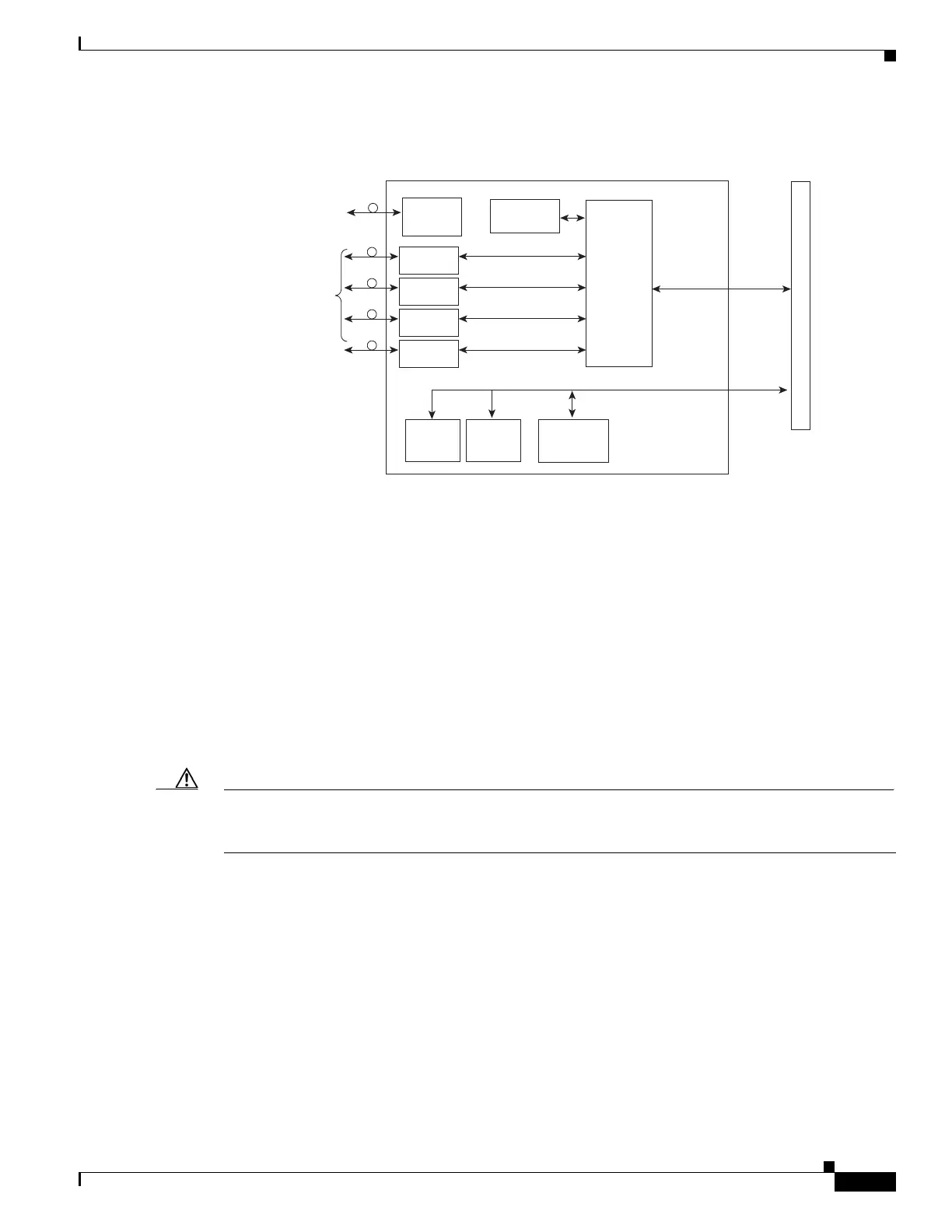8-31
Cisco ONS 15454 DWDM Reference Manual, R8.5
78-18343-02
Chapter 8 Transponder and Muxponder Cards
8.7.6 Client Interfaces
Figure 8-19 MXP_2.5G_10E Block Diagram
8.7.6 Client Interfaces
The MXP_2.5G_10E provides four intermediate- or short-range OC-48/STM-16 ports per card on the
client side. Both SR-1 or IR-1 optics can be supported and the ports use SFP connectors. The client
interfaces use four wavelengths in the 1310-nm, ITU 100-MHz-spaced, channel grid.
8.7.6.1 DWDM Interface
The MXP_2.5G_10E serves as an OTN multiplexer, transparently mapping four OC-48 channels
asynchronously to ODU1 into one 10-Gbps trunk. The DWDM trunk is tunable for transmission over
four wavelengths in the 1550-nm, ITU 100-GHz spaced channel grid.
Caution You must use a 20-dB fiber attenuator (15 to 25 dB) when working with the MXP_2.5G_10E card in a
loopback on the trunk port. Do not use direct fiber loopbacks with the MXP_2.5G_10E card. Using
direct fiber loopbacks causes irreparable damage to the MXP_2.5G_10E card.
8.7.7 Multiplexing Function
The muxponder is an integral part of the reconfigurable optical add/drop multiplexer (ROADM)
network. The key function of MXP_2.5G_10E is to multiplex 4 OC-48/STM16 signals onto one ITU-T
G.709 OTU2 optical signal (DWDM transmission). The multiplexing mechanism allows the signal to be
terminated at a far-end node by another MXP_2.5G_10E card.
Termination mode transparency on the muxponder is configured using OTUx and ODUx OH bytes. The
ITU-T G.709 specification defines OH byte formats that are used to configure, set, and monitor frame
alignment, FEC mode, section monitoring, tandem connection monitoring, and termination mode
transparency.
uP bus
Serial bus
Processor
Onboard
Flash
memory
RAM
Optical
transceiver
115357
FEC/
Wrapper
Processor
(G.709 FEC)
E-FEC
DWDM
(trunk)
10GE
(10GBASE-LR)
SR-1
(short reach/intra-office)
or
IR-1
(intermediate range)
SFP client
optics modules
Optical
transceiver
Optical
transceiver
Optical
transceiver
Optical
transceiver
B
a
c
k
p
l
a
n
e

